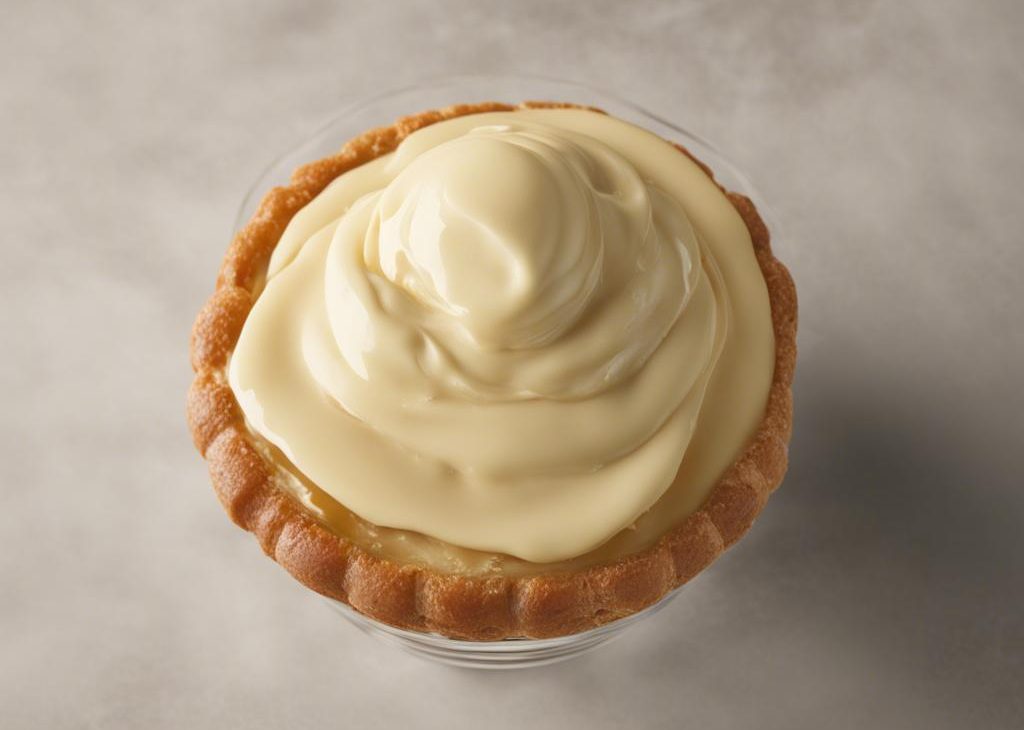


Homemade pastry cream (crème pâtissière) is a versatile custard filling you can use in so many baked goods, such as pies, eclairs, cupcakes, cream puffs, mille-feuille, and more. Follow my step-by-step instructions and success tips to get started, and then let your imagination run wild with all the ways to use it!
If you’ve ever had the pleasure of biting into a classic cream puff, eclair, or a slice of Boston cream pie, you’re familiar with pastry cream. Crème pâtissière, in French, is a vanilla-flavored custard-like filling you can use to fill pastries and other treats, such as fruit tarts, doughnuts, and more. You cook it on the stove just like you prepare the filling for banana cream pie, and then chill it before using.
And yes, it can replace the pudding filling in banana cream pie!
It’s not only versatile in its uses, but also in its many variations. Fold in whipped cream to make a crème légère, or lightened cream (which we do for the filling of this mille-feuille). Mix with whipped butter to make a crème mousseline. And experiment with different flavors, such as adding lemon, cinnamon, flavored liqueur, or a splash of almond extract.
The one in the recipe card below is a classic vanilla-flavored pastry cream.
. But a 2-quart glass batter bowl like this one or this one would work great here too. Sturdy wire whisk and/or silicone whisk: If your saucepan is the coated nonstick kind, use a silicone whisk so you don’t scratch it. Medium saucepanFine-mesh sieveHeat-proof bowl: I use one from this set of glass mixing bowls or this set of glass storage containers. Plastic wrap: Placing a piece of plastic wrap on top of the pastry cream before chilling prevents a “skin” from forming on the surface.
The detailed instructions are in the recipe below, but let me share some key steps and success tips so you have a better understanding before you begin.
Cornstarch and egg yolks thicken the cream. Combine those first, to begin dissolving the powdery cornstarch.
Heat the milk and sugar. You’ll simmer whole milk and granulated sugar together on the stove, and then remove it from heat:
Now you’ll temper the egg yolks.
Tempering is important here. If you’ve never done it before, tempering egg yolks is nothing to fear—all you’re doing is slowly raising the temperature of the egg yolks so they don’t scramble. If you can whisk, you can temper! Slowly pour the hot milk mixture into the egg yolks and cornstarch, whisking constantly.
Here is the egg yolk/cornstarch mixture with *some* of the warm milk/sugar whisked in. It begins to thin out almost immediately.
Strain it. After you’ve whisked in all of the hot milk/sugar mixture, pour it all into the saucepan through a fine-mesh sieve, to strain out any solids that may have formed during tempering:
Now you’ll place the mixture back on the stove.
Bring it to a boil. At first it won’t seem like it’s thickening much, just getting frothy, but as soon as it reaches a boil with big bubbles bursting on the surface, it will thicken up pretty much immediately.
Remove from heat & add flavor. Stir in butter, vanilla extract, vanilla bean + a pinch of salt.
This recipe makes about 2–2.5 cups of pastry cream, or about 580–610g.
Here is the pastry cream before chilling:
Place a piece of plastic wrap on top of the pastry cream before chilling to prevent a “skin” from forming on the surface. Chill itin the refrigerator for a minimum of 3 hours or overnight. It will firm up a lot during this time.
Give it a stir after chilling and it’s ready to use!
You can take this recipe a step further and add whipped cream to the chilled pastry cream. This considerably lightens up the texture, making it velvety-smooth—think homemade whipped cream, but richer and more substantial. When you add whipped cream to pastry cream, I learned, it’s called crème légère, or lightened cream. (It can also be called diplomat cream or crème diplomate, but that sometimes includes gelatin.)
This is the pastry cream after combining with whipped cream. I use it to fill mille-feuille.
Add these flavoring suggestions when you whisk in the butter and salt:
I also use it as a cake filling, like Boston cream pie. Note the recipe difference, though. That recipe is from America’s Test Kitchen cookbook, and it uses half-and-half, flour, and more egg yolks. In my own testing, the recipe below produces pretty much the same results in terms of thickness and stability, so it’s great to use in layer cakes! Either works wonderfully.
Homemade pastry cream (crème pâtissière) is a versatile custard filling you can use in so many baked goods, such as pies, eclairs, cream puffs, mille-feuille, and more. Follow my step-by-step instructions and success tips to get started, and then let your imagination run wild with all the ways to use it!